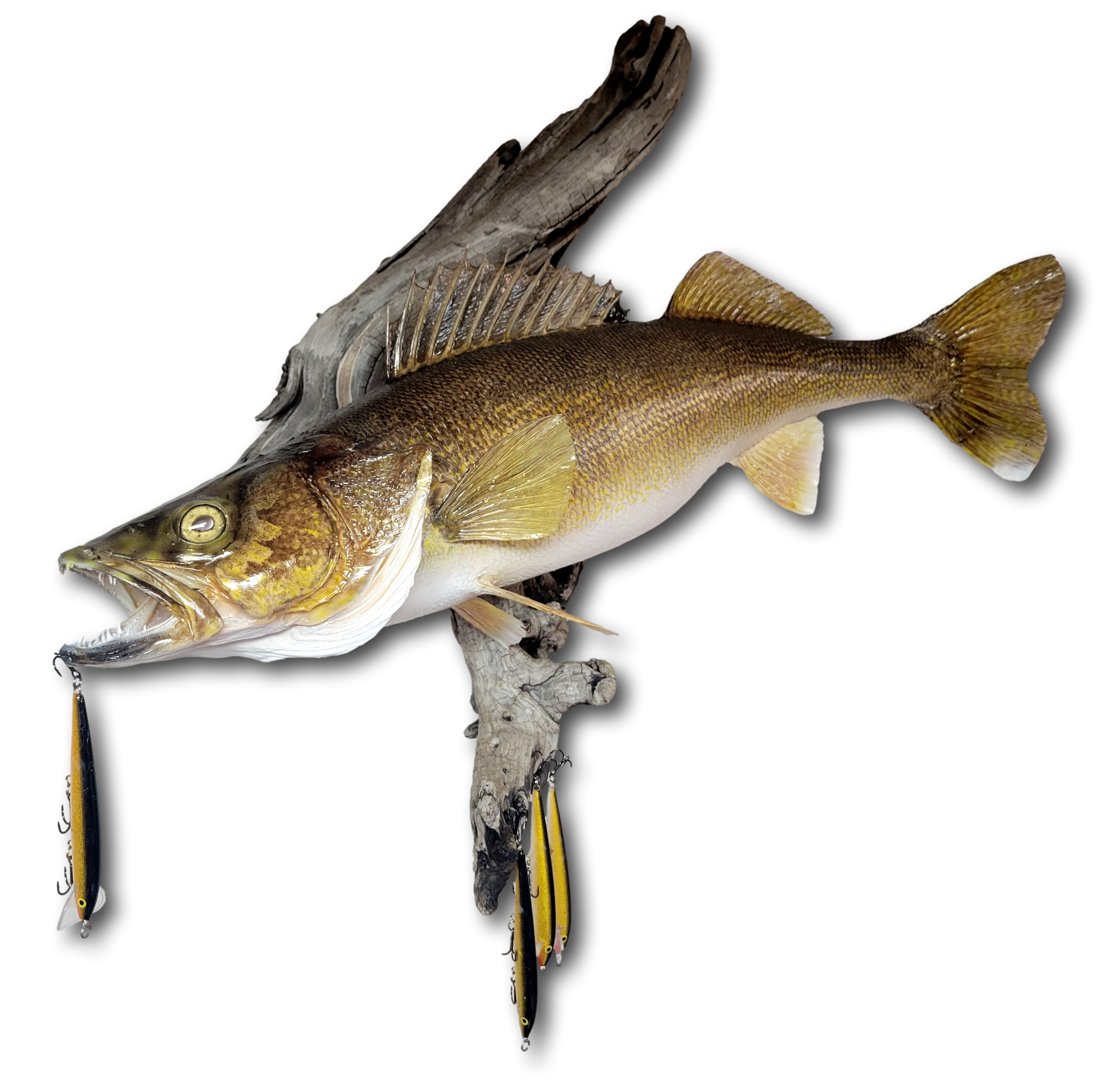4th Aug 2023

My family and I have been going to Leech Lake for more than 20 years now. The first year we were up there, I had my Pflueger spinning rod and reel, and my buddy and I were trolling for walleyes with #5 Shad Raps. I hooked something like I had never felt before, it gave a good head shake and poof, my monofilament line came floating wistfully down into the water. My tackle and lure never to be heard from again.
The truth be told, I'm not sure what weight of line I had on the reel, and my drag may have been too tight, etc., but the bottom line was I decided I needed better line. More from this story at the bottom...
Below are the 3 basic types of line you will run into conventional fishing, meaning not fly fishing which is its own animal. These are just basic descriptions in order to help simplify the choices.
Monofilament Fishing Line
If you buy a rod and reel combo off the shelf and it is spooled with line, odds are it is with monofilament, which has been around forever.
Advantages:
- Stretch: Monofilament will stretch about 25%, which can help if you set the hook too hard, it is more forgiving
- Inexpensive: Monofilament tends to be the least expensive of the line types
- Flexible: Monofilament line is very flexible, which makes it easy to work with and to knot
Disadvantages:
- Mushy Feel: I find it difficult to tell what my lure is doing or sometimes to even detect a light bite with Monofilament, because of the stretch.
- Lower Strength: Monofilament line has a considerably bigger diameter for the same size weight when compared to other types
Flourocarbon Fishing Line
Advantages:
- Stretch: Less stretch than monofilament, resulting in more sensitivity to what is going on under the water
- Visability: Flourocarbon nearly disappears when under water, making it a good choice for easily spooked fish
Disadvantages:
- Very Stiff: Flourocarbon can be very stiff, especially in the larger sizes, potentially leading to knot failure
- Cost: Flourocarbon can be pretty expensive
Braided Fishing Line
Advantages:
- Stretch: Braided lines have nearly no stretch, resulting in more sensitivity to what is going on under the water, even being able to feel small weeds fouling your lure.
- Strong: Braided line is very strong at a smaller physical line diameter. A 12# test braided line is not much bigger in diameter than a 4# Mono or Flouro line.
- Super Sensitive: Braid lets you feel how your lure is behaving, if the line is fouled, if a fish is taking interest, etc. Whatever happens to that line is transmitted to the person fishing.
Disadvantages:
- Cost: Is more expensive than Mono
- Harder to cut: You're likely not going to cut braid by biting it like you can with mono. It is tough.

So, back to my story from above. From that year, forward, I have used nothing but braid. As a fishing enthusiast and not a professional, braid has been my go to since then. I love the way it feels and how I can tell exactly what is happening at the end of my line. If I hook a reed, I can wrap the line around my hand a couple of times and pull it free without worrying about the line breaking. (Be careful, it can slice your hand!) Since it is a smaller diameter, I feel I have better control on the depth that my lures run when trolling, and I like it equally as well when jigging or casting. And, knock on wood, I have not lost a single fish because of line breakage since. In fact, we have caught two musky while trolling for walleye with 8 pound braid, and brought them both into the boat, no problem. If you are making a living catching fish, then I am sure that there are times when the other types of line might be called for, but for all around fishability and confidence, I don't think you can go wrong with braid.
Color Preference: Braided line comes in a myriad of colors. I've used white, yellow, green, and multicolor. I've caught fish on all of them. If you are fishing in a method where it is helpful to see the line (Jigging, bobber fishing for example) a white or yellow will help you see what the line is doing. Other than that, I recommend you find a color that appeals to you and don't look back!
Brand Preference: If you have a brand you like to support, I'm sure their braid is great. I've run probably 7 or 8 different brands at different times, and I don't have a preference. They've all worked great for me. Usually I just fill my spool with whatever they have in bulk at the bait shop, and I have never had an issue.
In closing, if you have a passion for fishing line itself, there are benefits to all the different options. But if you just want something that is always going to bring in what you hook, I don't think you can go wrong with braided line for an all around choice!
To great experiences!

